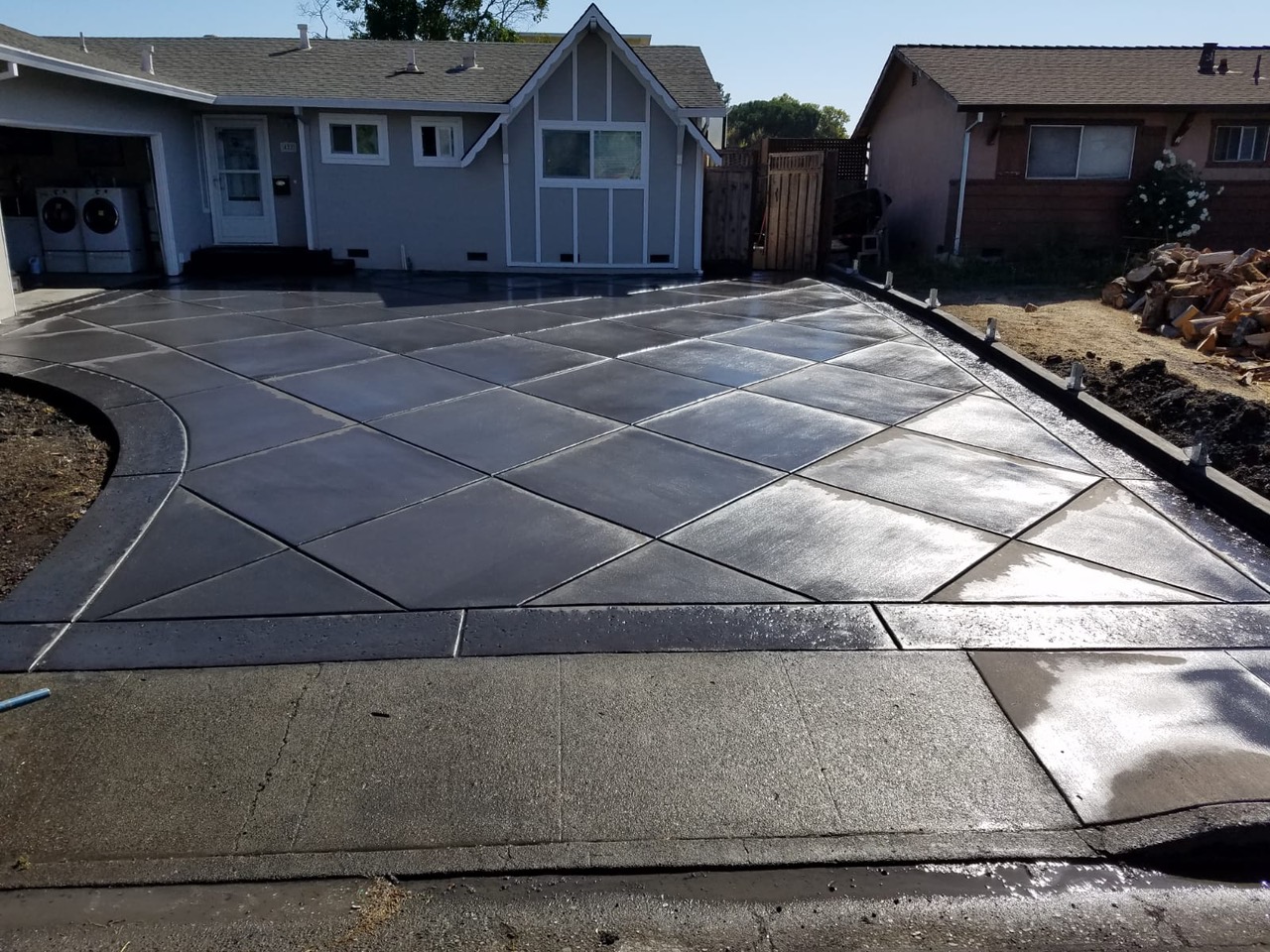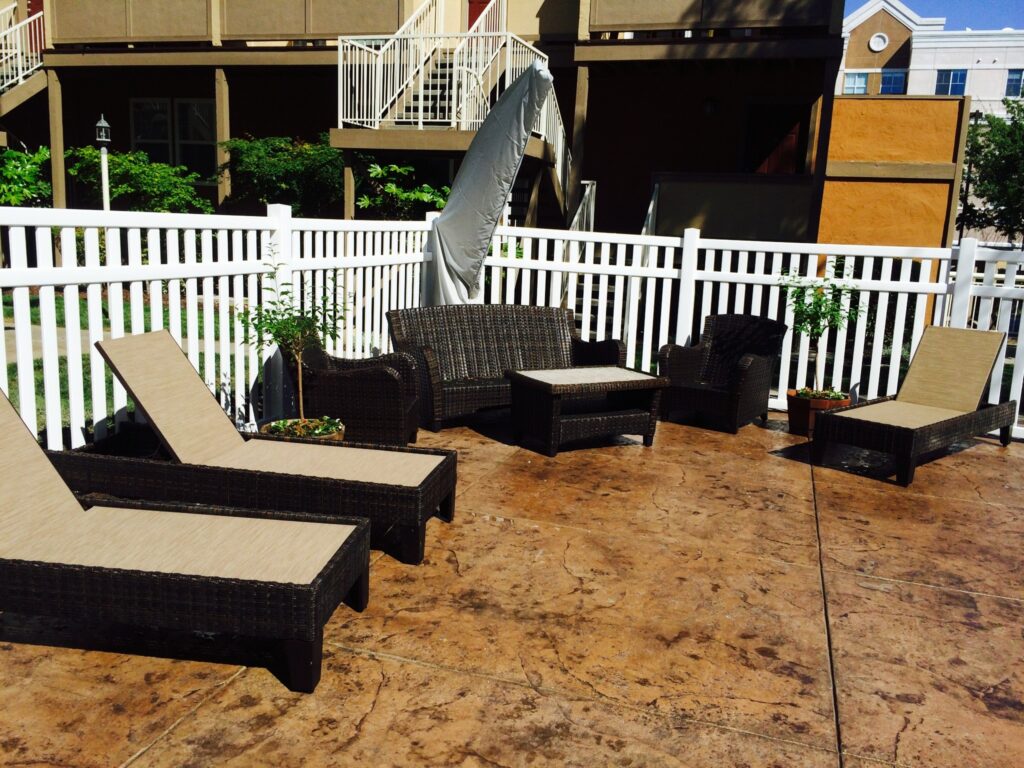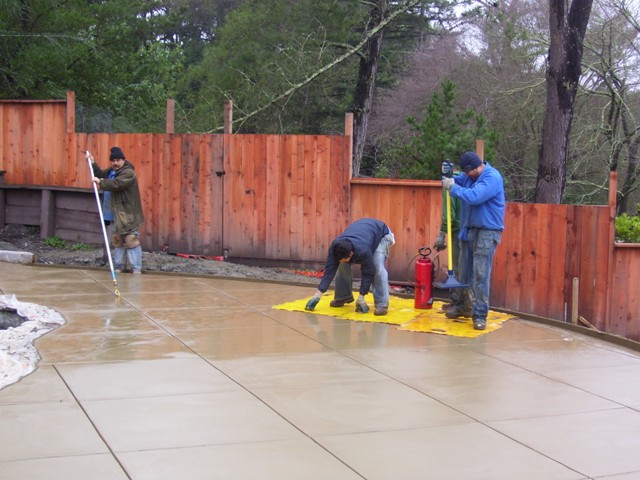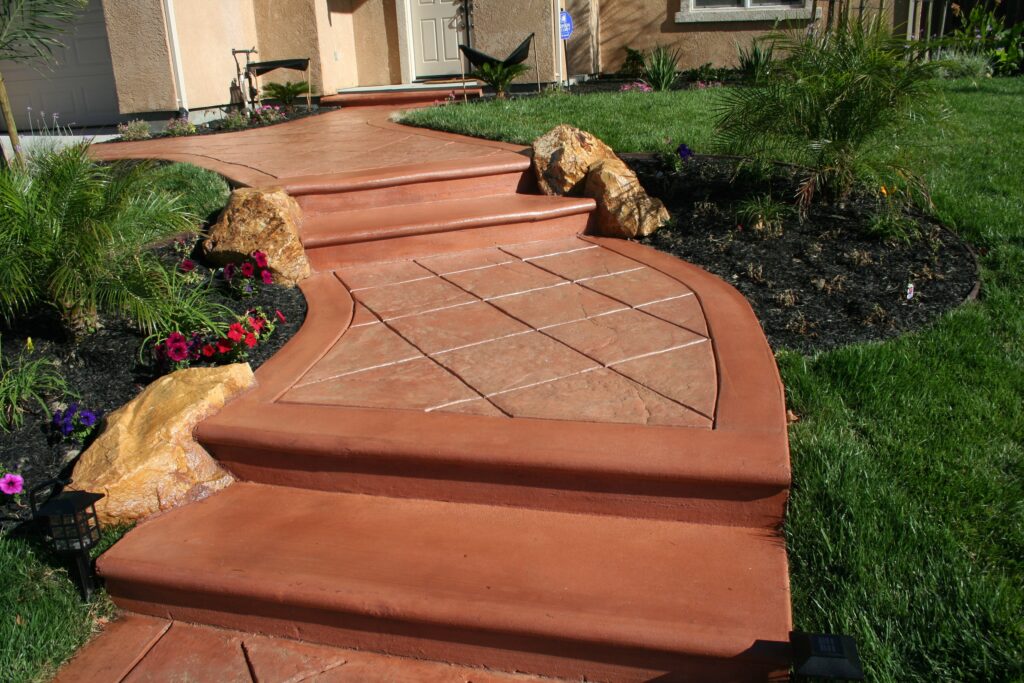
When it comes to hardscaping projects like installing a new driveway or patio, concrete provides a solid solution. However, before scheduling a project with a concrete contractor, it’s worthwhile to get a glimpse into the process so you know what to expect. To learn more about concrete design, installation and maintenance, we asked five Diamond Certified Expert Contributors to provide their professional insights.
Planning for a Concrete Installation
Because a concrete installation is permanent and not easily altered, proper planning is crucial to ensure a quality result. While aesthetic design is obviously important, there are a few lesser-known aspects that are critical to the long-term integrity of your installation.
According to Charles Lee, owner of California Concrete – Pump Pros, one aspect you need to consider is your installation’s effect on the surrounding landscape. For instance, if you have a tree in your yard, you need to give it adequate room to grow, breathe and intake water—otherwise, you risk strangling it with the concrete. By being mindful of your landscape, you’ll be able to enjoy your new patio or pool deck without harming its natural features.
It’s also important to factor in the type of soil you live on. According to Emmanuel Hernandez, owner of Calnorthex Concrete, if you live in an area with expansive soil (such as clay), your contractor should saturate it in the days leading up to installation. That way, the soil will be in a state of maximum expansion when the concrete is installed, which reduces the chances for damage caused by soil expansion in the future. If you’re unsure whether your property has expansive soil, Mr. Hernandez suggests calling a local soil engineer to get more information and possibly schedule an in-person assessment.
Another important consideration for concrete installation is drainage. According to Russell Calhoon, project manager at Paradigm Concrete & Construction, Inc., when water isn’t able to properly drain from the area beneath and around the installation, it often leads to cosmetic problems and even premature failure. “Prior to the job, your concrete contractor should make sure there’s adequate drainage for the installation area,” he says. “If there isn’t, the issue will need to be addressed before moving forward.”

Concrete affords an endless number of design possibilities Photo: California Concrete – Pump Pros ©2021
Concrete Design Options
Most homeowners don’t realize the full extent of their options for designing a concrete installation. In fact, there are countless ways to enliven a concrete driveway, patio or pool deck, from integral or surface color to decorative finishes and patterns.
One of the most popular design options with modern concrete is adding color. “Gray concrete used to be the industry standard, but with today’s colored concrete products, property owners now have virtually unlimited design options,” affirms Mr. Hernandez. “Colored concrete can mimic more expensive materials like flagstone, brick and pavers, allowing you to achieve your desired look at a reduced cost. Plus, colored concrete is more likely to hide oil stains, cracks and other flaws that occur with age.”
David Figueroa, owner of Kodiak Construction, lists some additional techniques used for producing decorative effects with concrete:
- Stamped concrete is achieved by pressing a stamp into wet concrete to create a pattern or texture. Stamped concrete can resemble natural stone, brick, wood, tile and other patterns.
- Concrete staining uses acid- or water-based stains to alter the color of the concrete.
- Polished concrete is popular for interior floors and countertops. When coupled with added and natural aggregates in concrete, polishing gives a smooth and even shiny finish.
- Engraving concrete with saws or specialty grinder blades creates patterns, designs and grooves in the surface. This treatment can make concrete look like brick, cobblestone or natural stone.
- Decorative overlays can be applied to new or existing concrete surfaces. These overlays can include designs, colors, textures or other specialty features.

A construction crew puts the finishing touches on a stamped concrete pool deck. Photo: Paradigm Concrete & Construction, Inc. ©2021
Concrete Installation Steps
Installing concrete isn’t as simple as “pour and set”—multiple steps are necessary to ensure the installation’s long-term integrity and performance. The first step is to prepare the subgrade. “Whether it’s plain soil or base rock, the subgrade needs to be properly compacted,” explains Mr. Figueroa. “Ideally, base rock should be compacted to a 98 percent proctor density, which will provide a solid surface for the concrete to lie upon. If the native soil doesn’t provide an adequate subgrade material, a fill alternative like sand, gravel or crushed stone may be necessary to achieve the low compressibility needed to support the concrete installation.”
The next step is reinforcing the installation with rebar. “To provide maximum reinforcement, the steel rebar should be placed at center depth of the concrete slab,” says Mr. Figueroa. “For example, if the slab is four inches thick, the rebar should be placed at a depth of roughly two inches.”
After the rebar is in place, it’s time to pour the concrete. For the best results, Jose Eduardo Sandoval, president of Callado Concrete, recommends investing in products and methods that exceed the minimum industry standards. “One of the best ways to minimize cracks with concrete is to use a durable product like 3,000 PSI concrete,” he explains. “You can also ask your contractor to add extra thickness. When pouring concrete, a lot of contractors go with a thickness of two or three inches, but four inches of thickness will provide additional strength and help prevent cracks.”
An important step when pouring concrete is to hose it down with cool water, which helps prevent cracks by slowing down the drying process. In addition to hosing down the concrete during installation, Mr. Calhoon says you can hose it down afterward. However, he recommends doing this at night or at least during a cooler time of day. “If you hose off your concrete during the day, the water will dry up on the concrete and cause a blotchiness or efflorescence,” he says. “While this can often be cleaned off with a vinegar/water solution, it’s best to avoid it in the first place.” He also adds that you should not hose down colored concrete, as this will cause a film to form on the top that’s difficult to remove.
When the new concrete finishes curing, it’s time for the final step: applying a sealant. “Sealing is important because concrete is extremely porous, which leaves driveways and patios susceptible to staining,” explains Mr. Lee. “The sealant acts as a clear coat that sits on top of the concrete surface and makes it impenetrable to liquids. When liquid spills on sealed concrete, simply hose it down and it’ll come right off without leaving a stain.” Mr. Lee adds that you should reseal your concrete every year to maintain the sealant’s effectiveness.

Don’t forget to maintain your concrete structure following installation. Photo: California Concrete – Pump Pros ©2021
Maintaining Your Concrete After Installation
While concrete is a tough material, it nonetheless requires ongoing maintenance to stay looking and performing its best. Mr. Sandoval shares some general tips for concrete care:
- Wash walkways and driveways at least twice a year to remove environmental pollutants that can speed up deterioration.
- Repair cracks as soon as they appear to deter water and weeds.
- Clean up spills as soon as they happen. Don’t use a hose to wash an oily spill; you’ll only spread it and create a bigger stain. Remove as much of the liquid as possible with cat litter, cornmeal or any other absorbent material you have on hand.
- Sweep leaves and grass clippings off of driveways, patios, and walkways. The decaying vegetation can leave hard-to-remove stains on concrete and masonry.
- Keep weeds and tree roots from encroaching on your driveway, walkway or patio. Plants and tree roots are strong enough to break concrete and masonry.
- Have your concrete driveway sealed every few years to protect its surface from spills and stains.
Find a Diamond Certified concrete specialist in your area
